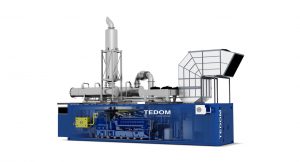YES… if it’s sized correctly at design stage and installed in the right way. It will also reap significant financial benefits for the building owner.
Too many CHP installations are sized on the heat output only to satisfy Part L of the Building Regulations and not sized according to the buildings base heat load AND base electrical load. The result…? A CHP that is oversized thermally that will seldom run because the buildings actual heat demand is predominantly below the output of the CHP.
 Another reason why too many CHP installations don’t operate effectively is because of a fundamental flaw in many of the building energy model calculators in that they don’t give any consideration to the relationship between heat demand and electricity demand. This will often result in the CHP exporting excess electricity onto the grid at the cost of the building owner. Or if power modulation is installed the CHP will modulate down and eventually shut off when there isn’t sufficient electrical demand from the building.
Another reason why too many CHP installations don’t operate effectively is because of a fundamental flaw in many of the building energy model calculators in that they don’t give any consideration to the relationship between heat demand and electricity demand. This will often result in the CHP exporting excess electricity onto the grid at the cost of the building owner. Or if power modulation is installed the CHP will modulate down and eventually shut off when there isn’t sufficient electrical demand from the building.
Step 1. Contact shentongroup for help in carrying out the next four steps! T: 08448 884 445
Step 2. Plot the buildings heat demand profile over 12 months based on a typical 24 hour period on a graph.
Step 3. On the same graph plot the buildings electrical demand profile over 12 months based on a typical 24 hour period.
Step 4. Look at where the heat demand profile and the electrical demand profile cross each other to ascertain how many hours per day there are heat and electricity demands at a level equal or above the outputs of the CHP. Ideally the CHP wants to be running a minimum of 15 hours per day to make it financially viable.
Step 5. A buffer vessel could be installed to smooth out some of the periods during each day where demand drops below the CHP’s output.


